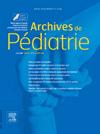早期骨科手法治疗预防颅骨位置畸形:一项随机对照试验。
IF 1.3
4区 医学
Q3 PEDIATRICS
引用次数: 0
摘要
背景:颅位畸形在出生后的头几个月经常发生。目的:评价骨科手法治疗(OMT)预防危重新生儿4月龄位置性斜头畸形和短头畸形的疗效。方法:这项单中心、随机、对照、开放标签的研究于2019年至2022年在法国蒙彼利埃大学医院产科进行,终点采用盲法评估。年龄在3至10天之间且至少有一种颅畸形危险因素的新生儿被纳入研究,并随机分为两组,一组接受OMT治疗,另一组接受建议预防颅畸形,另一组只接受建议(标准护理)。OMT包括整骨疗法评估、整骨疗法治疗和至少一次随访。主要结局为出生后4个月发生斜头畸形(颅不对称指数≥106%)或短头畸形(颅指数≥93%)。结果:试验因入组问题提前终止(占计划入组人数的56.1%)。纳入的101例患者中,OMT组35例,对照组30例完成研究并进行分析。在4个月时,未观察到短头畸形(对照组相对于OMT的相对危险度[RR]: 1.55, 95%可信区间[CI]: [0.38, 6.39], p = 0.54)或斜头畸形(RR=1.64, 95% CI [0.34, 8.00], p = 0.54)的发生率有显著差异。与OMT组(n = 1)相比,对照组(n = 5)出现严重短头畸形或斜头畸形的几率更高;P = 0.09)。无不良反应报告。结论:本研究未发现OMT对颅脑位置畸形的发生有显著影响。然而,招募和随访方面的困难,部分与COVID-19大流行有关,导致这项研究的力度不足,无法得出关于OMT潜在益处的明确结论。本文章由计算机程序翻译,如有差异,请以英文原文为准。
Early osteopathic manipulative treatment to prevent cranial positional deformities: A randomized controlled trial
Background
Cranial positional deformities occur frequently in the first months of life.
Objective
To evaluate the effectiveness of osteopathic manipulative treatment (OMT) in preventing the onset of positional plagiocephaly and brachycephaly at 4 months in at-risk newborns.
Methods
This single-center, randomized, controlled open-label study, with blinded assessment of the endpoints, was carried out at the maternity unit of Montpellier University Hospital (France) between 2019 and 2022. Newborns aged between 3 and 10 days with at least one risk factor for cranial deformity were included and randomized into a group receiving OMT in addition to advice for the prevention of cranial deformities or a group receiving advice alone (standard care). OMT included an osteopathic assessment, osteopathic treatment, and at least one follow-up session. The primary outcome was the occurrence of plagiocephaly (cranial asymmetry index ≥106 %) or brachycephaly (cranial index ≥93 %) at 4 months after birth.
Results
The trial terminated early due to enrolment issues (56.1 % of planned recruitment). Among the 101 patients included, 35 in the OMT group and 30 in the control group completed the study and were analyzed. At 4 months, no significant difference was observed in the rates of brachycephaly (relative risk [RR] of the control group vs. OMT: 1.55, 95 % confidence interval [CI]: [0.38, 6.39], p = 0.54), or plagiocephaly (RR=1.64, 95 % CI [0.34, 8.00], p = 0.54). A trend toward more frequent cases of severe brachycephaly or plagiocephaly was observed in the control group (n = 5) compared with the OMT group (n = 1; p = 0.09). No adverse effects were reported.
Conclusions
This study did not find any significant effect of OMT on the occurrence of cranial positional deformities. However, recruitment and follow-up difficulties, partly linked to the COVID-19 pandemic, resulted in an underpowered study that does not allow definitive conclusions to be drawn on potential benefits of OMT.
求助全文
通过发布文献求助,成功后即可免费获取论文全文。
去求助
来源期刊

Archives De Pediatrie
医学-小儿科
CiteScore
2.80
自引率
5.60%
发文量
106
审稿时长
24.1 weeks
期刊介绍:
Archives de Pédiatrie publishes in English original Research papers, Review articles, Short communications, Practice guidelines, Editorials and Letters in all fields relevant to pediatrics.
Eight issues of Archives de Pédiatrie are released annually, as well as supplementary and special editions to complete these regular issues.
All manuscripts submitted to the journal are subjected to peer review by international experts, and must:
Be written in excellent English, clear and easy to understand, precise and concise;
Bring new, interesting, valid information - and improve clinical care or guide future research;
Be solely the work of the author(s) stated;
Not have been previously published elsewhere and not be under consideration by another journal;
Be in accordance with the journal''s Guide for Authors'' instructions: manuscripts that fail to comply with these rules may be returned to the authors without being reviewed.
Under no circumstances does the journal guarantee publication before the editorial board makes its final decision.
Archives de Pédiatrie is the official publication of the French Society of Pediatrics.
 求助内容:
求助内容: 应助结果提醒方式:
应助结果提醒方式:


